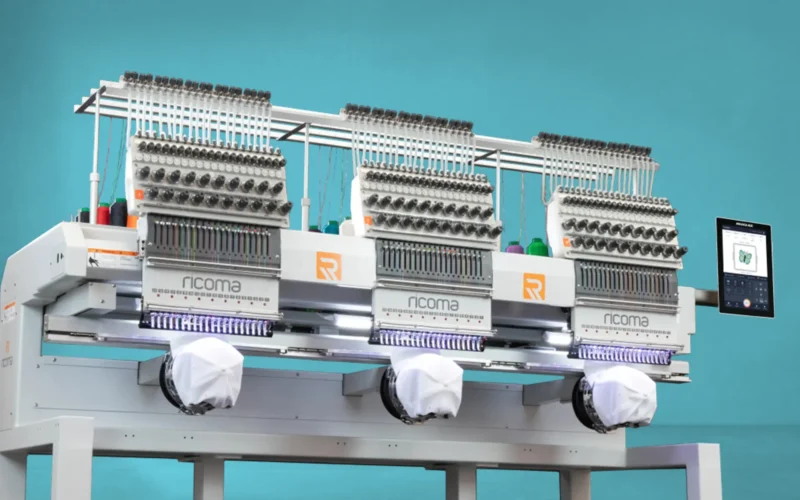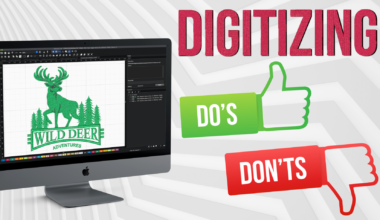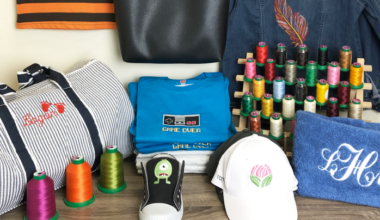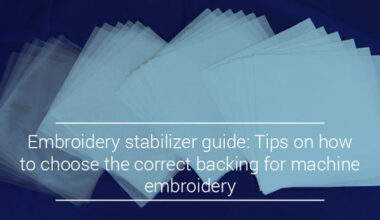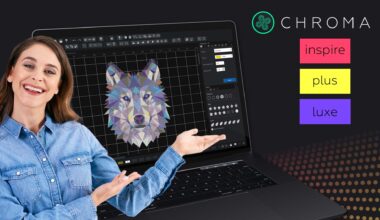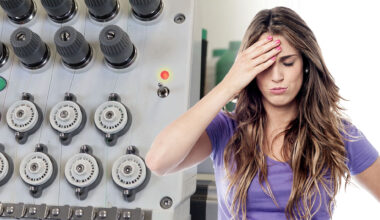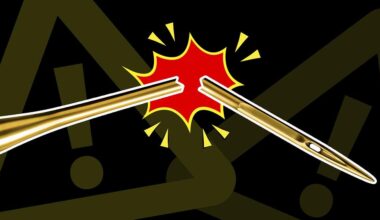Choosing the right commercial embroidery machine is a huge step to going full-out in your embroidery business!
But with so many options available, it’s important to know what to look for to ensure you make a wise investment. We want to help you understand the key factors to consider when selecting a commercial embroidery machine that fits your needs and business goals.
How to Know Your Need In Your Commercial Embroidery Machine
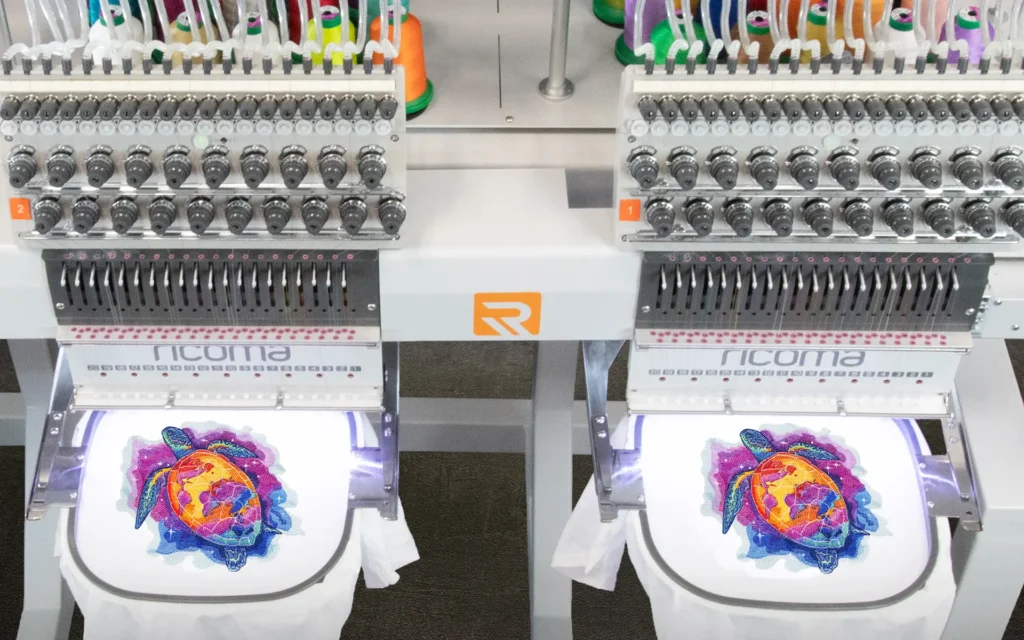
Understanding your specific needs is the first step in selecting the right embroidery machine. This involves considering your business requirements, the types of projects you’ll be working on, and your overall goals for growth and scalability.
Your Business Requirements
Your target market plays a significant role in determining the best commercial embroidery machine for your needs.
If you plan to focus on fashion, you’ll need a machine that can handle fine, delicate fabrics and intricate designs.
For sports uniforms, a machine that can work with durable materials and produce large, bold logos is essential.
Promotional items might require versatility to handle a variety of products, from hats to bags to jackets.
Scalability is another important consideration. If you plan to grow your business quickly, investing in a multi-head machine could save you time and increase your production capacity.
Commercial embroidery machines are a significant investment, and it’s important to set a realistic budget that includes not only the machine itself but also additional costs like software, accessories, and maintenance.
While it might be tempting to go for a cheaper option, remember that investing in a high-quality machine can save you money in the long run by reducing downtime and repair costs.
Types of Embroidery Projects
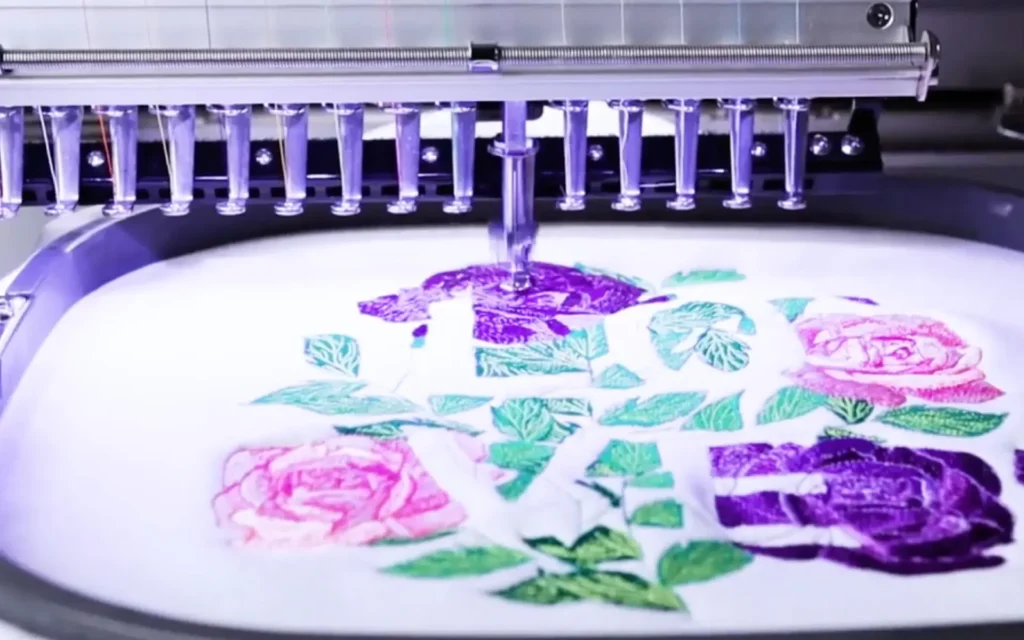
Design complexity is a major factor when looking for the best commercial embroidery machines for your needs. Some machines are better suited for simple, repetitive designs, while others are equipped to handle detailed and intricate work. If your business involves creating complex logos or personalized designs, look for a machine that offers advanced features and precision.
You’ll also want to consider the fabric types you’ll be working with. Different fabrics require different handling, and not all machines are versatile enough to work with a wide range of materials.
If you need to make on-the-fly adjustments to designs like changing colors or tweaking the layout, you may want to choose a machine that offers robust customization options. This flexibility can be a huge advantage in meeting client demands and producing unique, high-quality work.
Volume of Work
Estimating your daily or weekly production capacity. This will help you select a machine with the appropriate speed and stitching capacity to meet your business needs.
If you plan to produce a high volume of items, you’ll need a machine that can keep up with the demand without sacrificing quality! Features like automatic thread trimming and color changes can help you if you’re mass-producing.
Key Features to Consider
Choosing the right commercial embroidery machine involves evaluating several key features to ensure it meets your specific needs and helps you achieve high-quality results.
1. Stitching Speed and Efficiency
Stitching speed is measured in stitches per minute (SPM).
A higher SPM means faster production, but it’s essential to balance speed with stitch quality. Machines that offer smooth transitions between acceleration and deceleration help maintain consistent stitch quality, even at higher speeds.
Additionally, automatic features like thread trimming, color changes, and needle threading can significantly improve efficiency by reducing manual tasks and minimizing downtime.
2. Embroidery Area and Hoop Sizes
The embroidery area of a machine determines the maximum size of the designs you can create. It’s important to choose a machine that can handle your largest designs, ensuring you’re not limited by the machine’s capabilities.
Hoop variety is also important, as different hoop sizes offer flexibility for various project sizes. Machines with quick-change hoops enable faster changeovers between projects, saving time and increasing productivity.
3. Thread Color Capacity
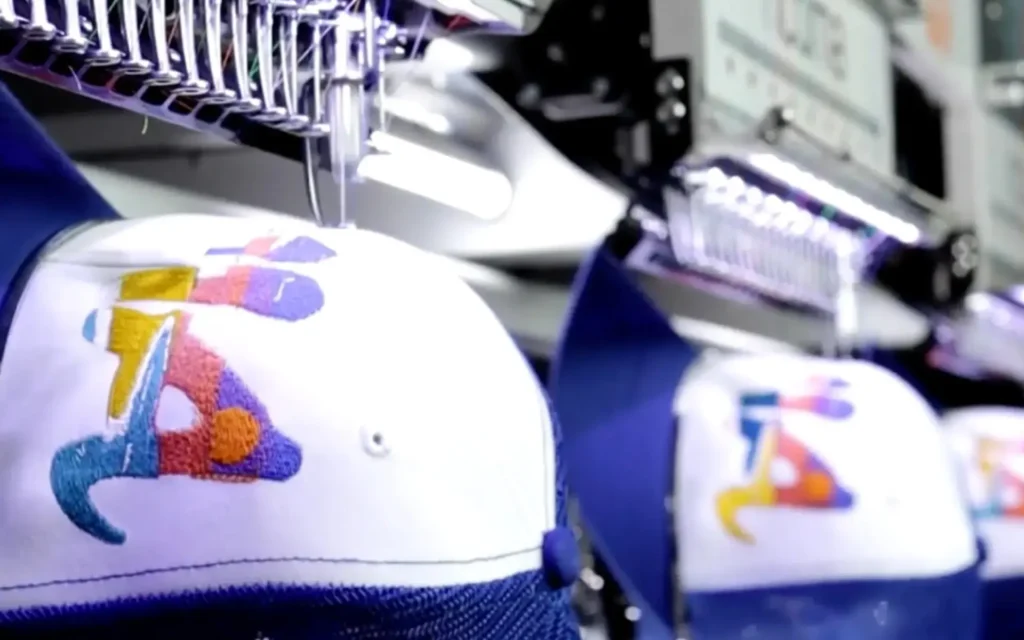
The number of needles on an embroidery machine affects its thread color capacity. More needles mean fewer thread changes, which leads to faster production, especially for designs that use multiple colors.
Automatic color change features save time and reduce the chance of errors during thread changes, ensuring your designs come out perfectly every time.
4. Durability and Build Quality
Durability and build quality are essential for ensuring your commercial embroidery machine can withstand continuous use. A sturdy frame construction provides stability and longevity, preventing vibrations that can affect stitch quality.
High-quality components minimize downtime due to breakdowns and reduce the need for frequent repairs. Investing in a machine with robust build quality can save you money in the long run by maintaining consistent performance and reducing maintenance costs.
5. Ease of Use and User Interface
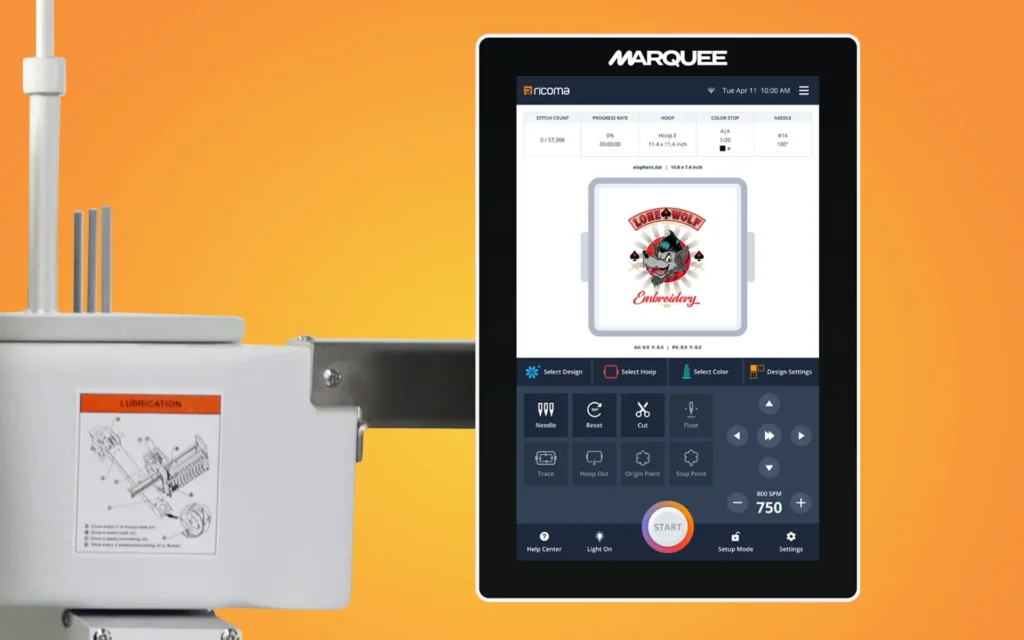
Intuitive controls reduce the learning curve, making it easier for you and your team to operate the machine efficiently. A user-friendly interface means you can spend more time creating and less time figuring out how to use the machine.
A touchscreen display can significantly simplify the process of selecting and managing designs. A large, clear display allows you to easily navigate through various options and settings, ensuring that everything is set up correctly before you start embroidering. This feature is particularly beneficial for beginners and those who prefer a visual interface over traditional buttons.
On-screen editing is another valuable feature. It allows you to make quick adjustments to your designs directly on the machine. Whether you need to resize, rotate, or tweak a design, doing so on-screen can save time and prevent errors.
6. Software Compatibility and Customization Options
Ensuring that your machine can handle various file types means you won’t be limited in your design choices. This flexibility allows you to work with a wide range of pre-made designs or create custom ones without worrying about compatibility issues.
Investing in high-quality editing software can further enhance your design capabilities. Such software allows you to create, customize, and refine your embroidery designs before transferring them to the machine.
Look for software (like our Chroma Digitizing software!) that offers robust features like layering, color management, and stitch simulation to make the design process more efficient and precise.
7. Maintenance and Servicing
Some of the top-rated commercial embroidery machines come with self-cleaning features, such as automatic oiling and cleaning, which can significantly reduce the time and effort required for regular maintenance. These features help ensure that the machine remains in optimal condition, reducing the likelihood of breakdowns and extending its lifespan.
Machines designed with user-friendly access points make it easier to clean, oil, and troubleshoot without the need for professional service. This can save time and money, as minor issues can be resolved quickly and efficiently.
A comprehensive warranty can protect your investment by covering repairs and replacements for certain parts. Additionally, having access to responsive customer support ensures that you can get help when needed, whether it’s troubleshooting an issue or finding replacement parts!
8. Budget Considerations
Prices can vary widely based on the machine’s features, capabilities, and brand. Determine how much you are willing to invest, keeping in mind that a higher upfront cost might result in better long-term value due to increased durability and fewer maintenance issues.
These include expenses for thread, needles, software updates, and regular maintenance. Understanding the total cost of ownership helps you budget more accurately and avoid unexpected expenses that could impact your profitability.
Calculating the return on investment (ROI) is a crucial step in the decision-making process. Estimate your potential earnings based on your production capacity and pricing. Then, compare this with your initial investment and ongoing costs to determine how long it will take to break even and start making a profit. A well-chosen embroidery machine can significantly boost your business’s productivity and profitability, making it a worthwhile investment!
Find the Best Commercial Embroidery Machine with Ricoma!
Finding the best commercial embroidery machine for your business involves a bit of research and practical testing – all with your friends at Ricoma!
We’ve helped small business owners from around the world scale their crafting businesses so they can do what they love. So why not get started? Browse through our machines today and find your perfect fit!
